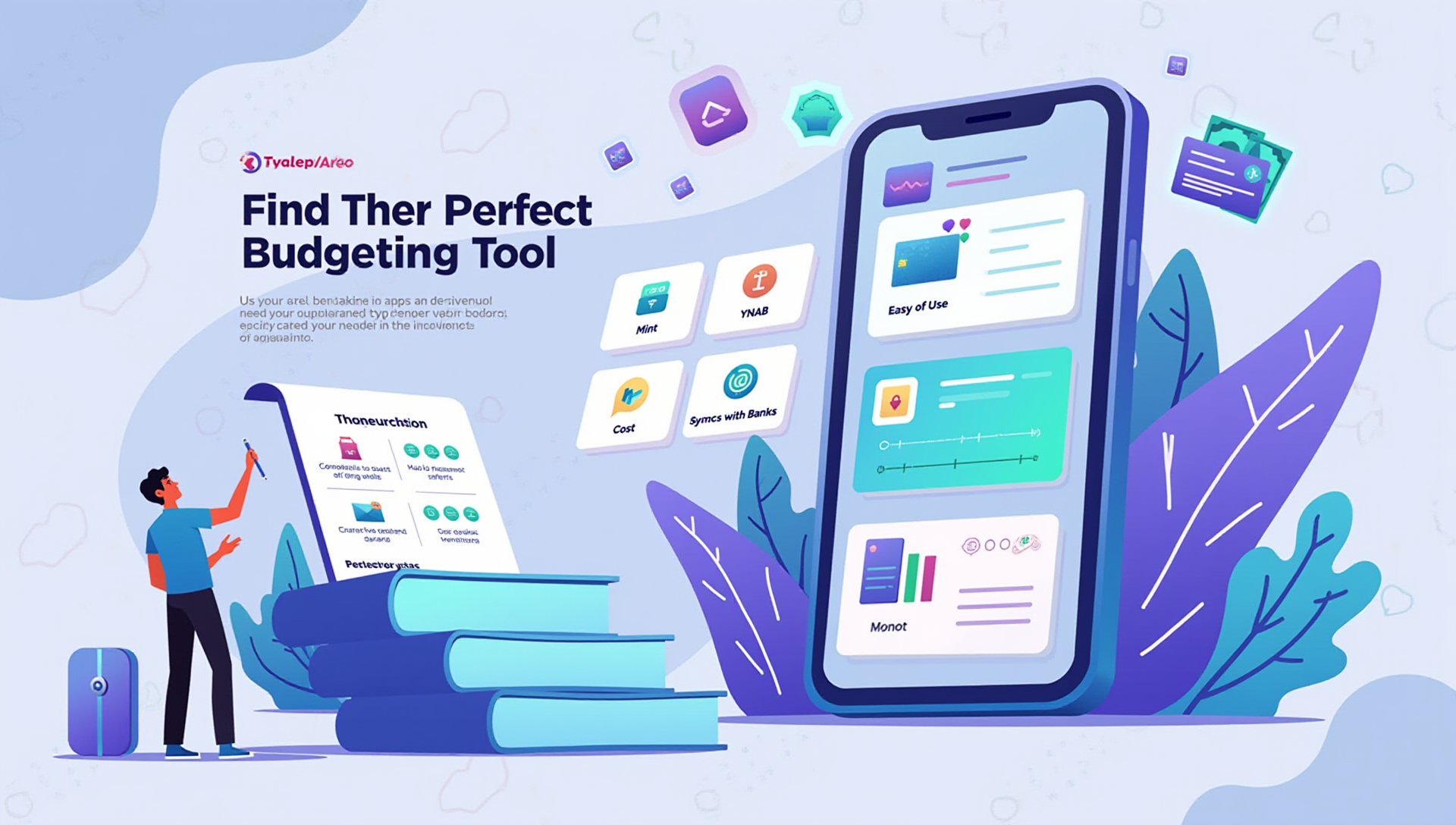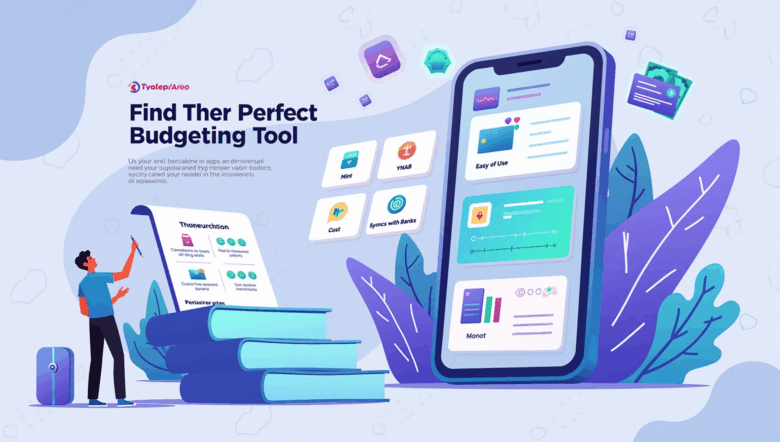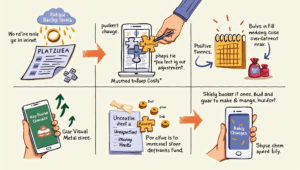 Budgeting Apps & Tools: Choosing the Right One for You
Budgeting Apps & Tools: Choosing the Right One for You
In an era where digital convenience meets financial literacy, budgeting apps and tools have emerged as essential companions for managing personal finances. Whether you’re striving to pay off debt, save for a big goal, or simply gain control over your spending, the right budgeting app can make all the difference. With countless options available, choosing the right one can feel overwhelming. This article aims to simplify that process by exploring key considerations, popular tools, and practical tips to help you find the perfect match for your financial needs.
Why Budgeting Apps Matter More Than Ever
The global shift toward digital living has transformed the way we handle money. From contactless payments to cryptocurrency, the financial landscape is evolving rapidly. Amid this change, budgeting apps have become indispensable for several reasons:
- Accessibility: Track spending anytime, anywhere.
- Automation: Automatically sync with bank accounts to categorize and analyze spending.
- Insights: Provide real-time data and visual breakdowns to understand financial habits.
- Accountability: Set goals and receive reminders to stay on track.
Given today’s fast-paced lifestyle and economic uncertainties, having a financial tool that fits in your pocket is not just a convenience—it’s a necessity.
Key Features to Look For in a Budgeting App
When evaluating budgeting tools, it’s important to focus on features that align with your goals. Here are the most critical aspects to consider:
1. User Interface & Experience
A well-designed app should be intuitive and easy to navigate. If it’s too complex or cluttered, you might find yourself abandoning it altogether.
2. Bank Syncing Capabilities
Most modern budgeting apps offer the ability to link directly to your bank accounts, credit cards, and investment platforms. This feature ensures real-time updates and minimizes manual entry.
3. Customization Options
Everyone budgets differently. Some users prefer to track every penny, while others focus on broader categories. Choose an app that allows you to tailor categories, goals, and alerts to your preferences.
4. Security
Your financial data is sensitive. Opt for apps with bank-level encryption, two-factor authentication, and transparent privacy policies.
5. Cost
Some apps are free with optional premium features, while others charge a monthly or annual fee. Make sure the value aligns with your budget and financial objectives.
6. Reporting & Insights
A good app will provide detailed reports on your spending trends, savings progress, and net worth. These insights can be eye-opening and instrumental in improving financial health.
Popular Budgeting Apps Worth Considering
To help you get started, here’s a breakdown of some of the most well-known budgeting apps available today:
1. Mint
- Best for: Beginners
- Cost: Free
- Features: Bank syncing, bill reminders, credit score monitoring, goal setting
- Pros: Easy to use, comprehensive dashboard
- Cons: Ads can be intrusive, limited customization
2. YNAB (You Need A Budget)
- Best for: Proactive budgeters
- Cost: $14.99/month or $99/year
- Features: Zero-based budgeting, goal tracking, workshops
- Pros: Strong educational resources, robust methodology
- Cons: Steeper learning curve, no free version
3. PocketGuard
- Best for: Simplicity and quick overviews
- Cost: Free (PocketGuard Plus available)
- Features: “In My Pocket” summary, subscription tracking
- Pros: Easy setup, great for overspenders
- Cons: Limited depth in reports and analysis
4. EveryDollar
- Best for: Dave Ramsey fans and envelope budgeting
- Cost: Free basic version; $79.99/year for premium
- Features: Manual entry, goal setting, income planning
- Pros: Simple and clean interface
- Cons: Fewer integrations, manual tracking in free version
5. Goodbudget
- Best for: Couples or shared budgeting
- Cost: Free (limited envelopes); $8/month or $70/year for premium
- Features: Envelope system, account syncing (premium only)
- Pros: Great for shared finances
- Cons: Manual setup can be tedious
Practical Tips for Choosing the Right Budgeting Tool
Choosing a budgeting app isn’t a one-size-fits-all decision. Here are a few practical tips to guide you:
- Identify Your Financial Goals Are you trying to get out of debt? Save for a home? Track expenses more accurately? Knowing your goals will help narrow your choices.
- Start with a Trial Many premium apps offer free trials. Take advantage of these to explore features without committing.
- Consider Your Habits If you prefer automation, opt for apps with bank syncing. If you’re a pen-and-paper person at heart, you might prefer apps with manual entry and envelope-style budgeting.
- Read Reviews and Join Communities User reviews and online forums can provide valuable insights and tips. Communities like Reddit’s r/personalfinance often share real-world experiences.
- Don’t Be Afraid to Switch Your financial needs may evolve over time. Reassess your budgeting tool periodically to ensure it still aligns with your lifestyle.
Real-World Scenarios: Matching Apps to Life Stages
Case Study 1: The College Student Samantha is juggling part-time jobs and student loans. She needs a basic app to track spending and avoid overdrafts. Mint is perfect for her, offering a simple interface and free credit score monitoring.
Case Study 2: The Young Professional Marcus just started his first job and wants to save aggressively for travel and investments. He chooses YNAB for its proactive budgeting philosophy and goal-oriented tools.
Case Study 3: The Growing Family The Smiths are managing a household of four and multiple income streams. Goodbudget helps them coordinate finances and stay on top of shared expenses.
Final Thoughts
Budgeting apps have revolutionized the way we manage money, offering powerful tools to build financial discipline, reduce stress, and achieve our goals. With so many options available, it pays to invest time in finding the right one. By assessing your needs, testing features, and staying flexible, you can find a budgeting companion that not only fits your lifestyle but also empowers your financial journey.
Remember, the best budgeting app is the one you’ll actually use. Start small, stay consistent, and don’t hesitate to adapt as your life—and your finances—evolve. Whether you’re a budgeting newbie or a seasoned planner, the right tool can make all the difference.




